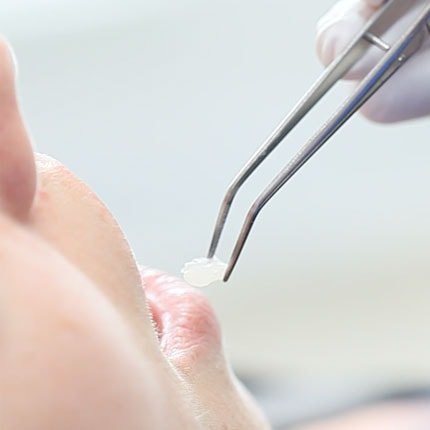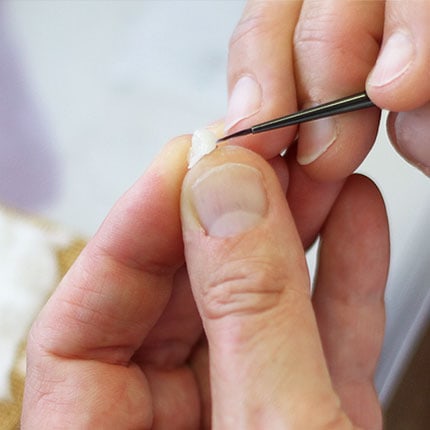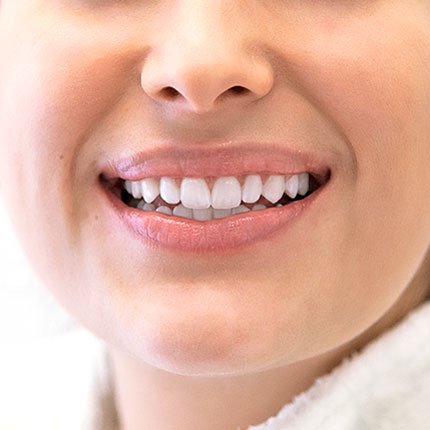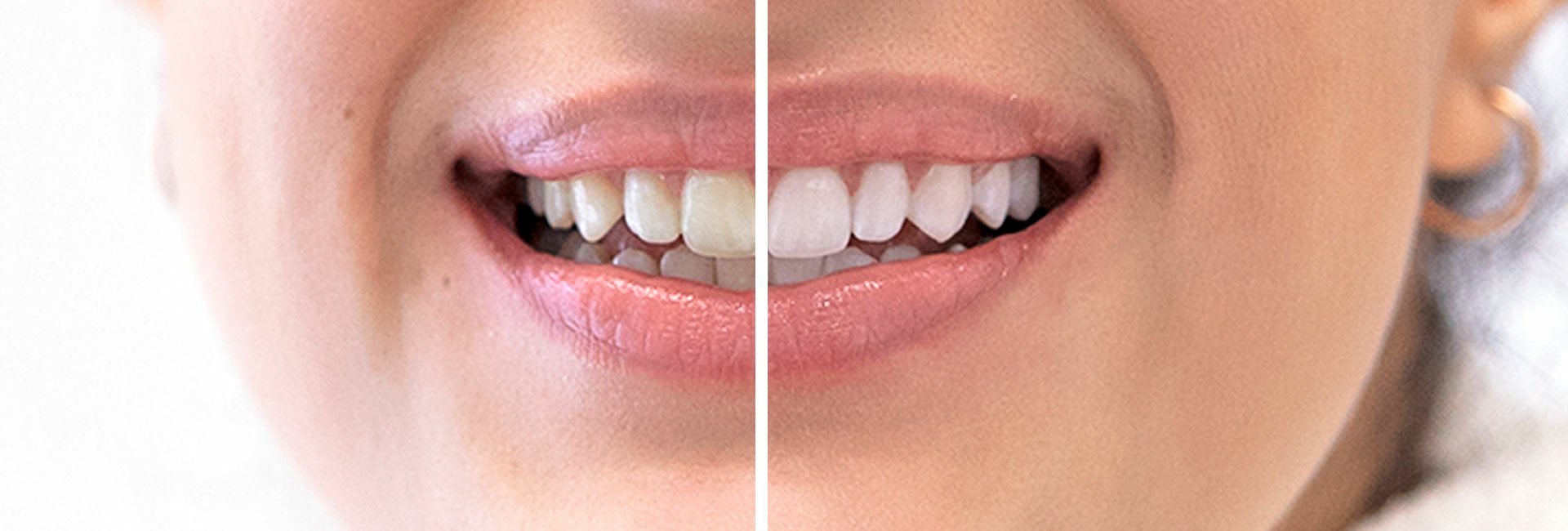
Aesthetic Dentistry
White, smooth, straight and blemish-free: that’s what most people want for their teeth. And just that is what is made possible today by modern dentistry. Modern aesthetics-enhancing methods can achieve the best appearance for your teeth. They are non-aggressive, affordable treatments that cause no pain whatsoever.
The new beautification methods give the teeth an optimal appearance. They are gentle, affordable and do not cause any pain.
Ceramic veneers

Veneers are what dentists call the wafer-thin ceramic cladding that can be applied to teeth to achieve a flawless, perfect appearance for the visible teeth surfaces.
We create these thin, completely natural-looking veneers (made from high-strength ceramic) on an individual basis just for you in our dental laboratory.
Solutions using veneers bring a range of advantages
Veneers are a very good solution for slightly malpositioned or discoloured teeth. They can be used to close gaps between the front teeth or give “crooked” teeth the appearance of being straightened. Veneers can even help where edges of teeth have been chipped away or there are cracks in teeth.
Teeth can often be either too small or too short, for various different reasons. Here too, veneers are a good treatment option to achieve the same appearance you perhaps once had or an even better-looking result that you’ve always wanted.
This innovative technique from the field of aesthetic dentistry means that harsh grinding down of useful tooth material, as is often required when treating with crowns, can be avoided. Only the surface of the tooth is roughened, or slightly “sanded down”.
After this, the veneer is firmly fixed to the pre-prepared tooth using a special dental bonding technique. This bond is particularly strong, with veneers staying firmly attached to teeth even after very long time periods.
For this thin ceramic layer to hold up against the stresses and strains of day-to-day life, we use CAD/CAM technology to make the ceramic substructure out of an industrially prefabricated and extremely stable hard ceramic material. Following this, our ceramic specialist technician applies the individual ceramic surfaces (visible to the outside world) to the raw veneer.
As veneers are made from transparent, tooth-coloured ceramic, the transition area from veneer to actual tooth cannot be seen, even over longer periods of time. The restored teeth have a completely natural appearance and are truly stunning in terms of aesthetics.
Ceramic fillings (inlays) – “CEREC”
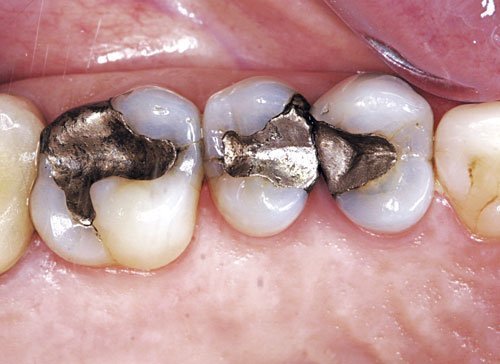
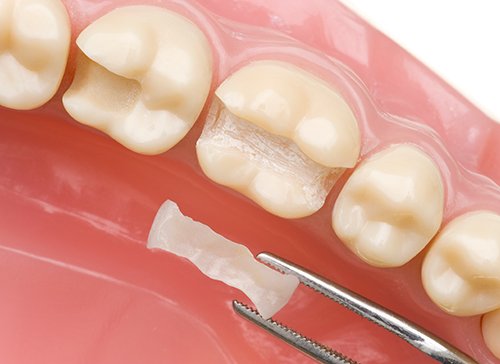
What makes these ceramic fillings really stand apart from the rest?
- The tooth-friendly preparation preserves the healthy portions of your tooth: the outer surfaces are usually left intact.
- Stable bonding of the thinnest parts of the tooth with custom-made fillings milled by machine: this allows for improved stability when compared with amalgam or gold fillings.
- These fillings are not affected by shrinking. For this reason, the seal formed at the edge of the filling is long-lasting, preventing bacteria from re-entering the tooth.
- Biologically-compatible, as ceramic is used: no metal, no immune response or allergic reactions from the body.
- As opposed to the bonded edges formed in other fillings and crowns, CERECs have an abrasion-proof join to the tooth. This prevents irritation of the gum line due to the filling.
- Natural colouring: ceramic colouring individually adapted to tooth colouring. This makes the transition area between the healthy tooth and the filling invisible.
- Even in the case of very large areas of tooth damage, treatment with CEREC ceramic fillings is still very much an option. In fact, this is where the stability advantages of the ceramic bonding technology can really come to the fore.
How does it work?
Firstly, the old filling and/or any areas of tooth decay are removed. The cavity area remaining is then prepared as required and photographed with a camera. The computer uses this captured data to render a three-dimensional image, which forms the basis for manufacturing the inlay. During a computer-controlled process, the filling is then milled out of an industrially prefabricated ceramic block of a colour that matches your natural teeth.
The dentist then carries out fine corrections and final touches to adapt the inlay to the neighbouring teeth. Now, the bonding process begins: both the tooth and the ceramic inlays are pre-treated and immediately bonded together, forming an immediate, stable join.
Bleaching – Tooth-friendly whitening
Being beautiful and having a healthy appearance have always been a deep desire for men and women alike. The teeth and mouth both play an important role. A radiant smile stands out straight away and sticks in your mind. The appearance of teeth has an unconscious influence on how we perceive the age, social status and the general state of health of people we meet. The colour of teeth plays a particularly important role. Many patients would like to have whiter teeth, something that can be achieved using bleaching.
How does tooth whitening work?
First of all, a protective gel is applied to the surrounding gums. The lips and tongue are covered with a plastic film. The dental hygienist then applies the bleaching gel to the cleaned tooth surfaces. The gel is then activated using a special light. This process takes about 15 minutes. The gel is then removed by suction, fresh gel reapplied, and the process repeated, usually three times. Following this, the teeth appear many whiteness levels brighter. It’s just that easy to achieve your goal! And the reward is a beaming, bright smile.
If you have any questions, please write to us via the contact form or give us a call. We would be happy to advise you further!
